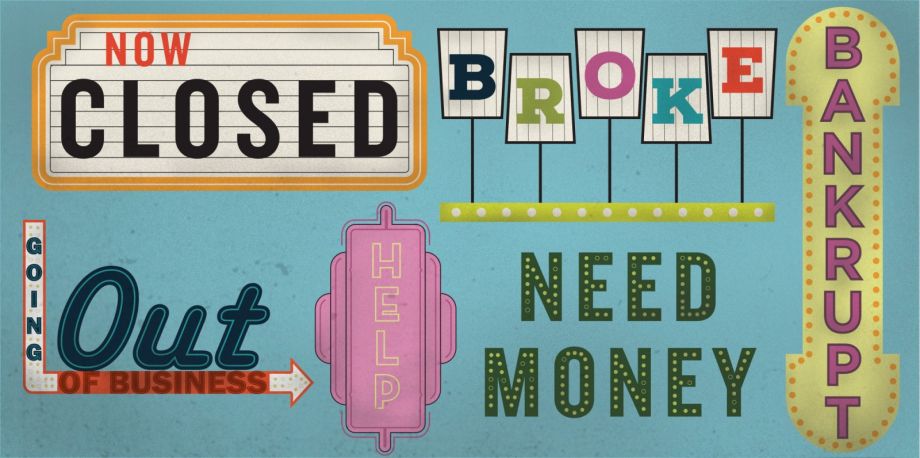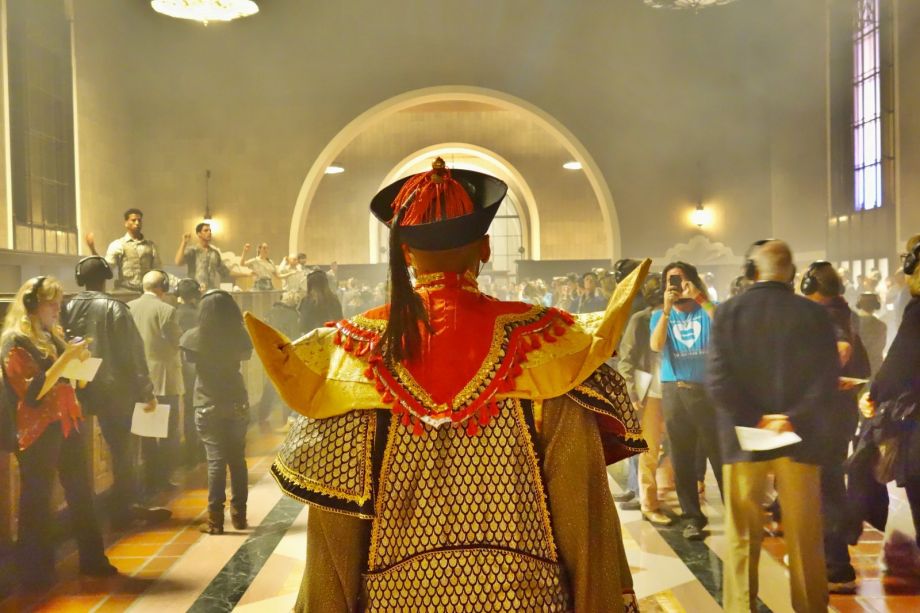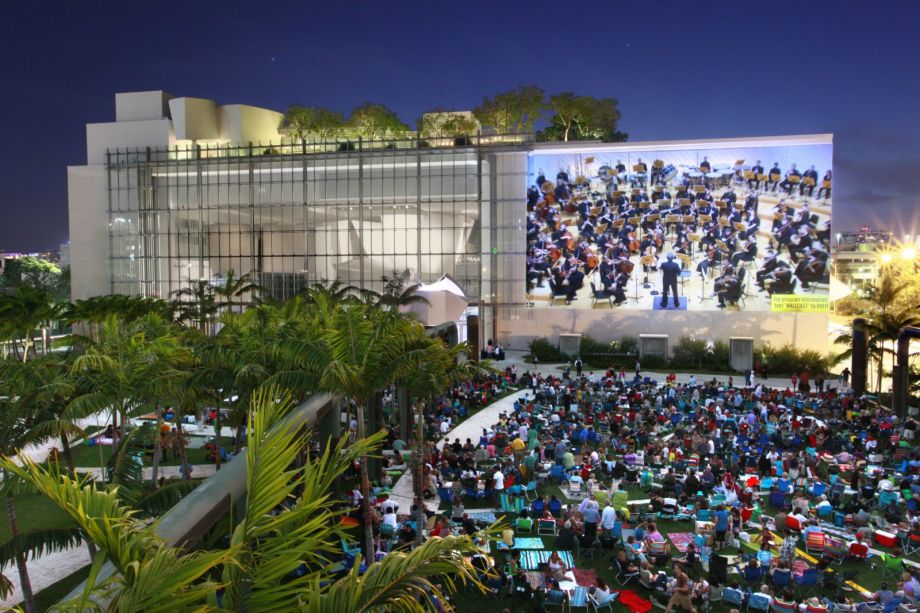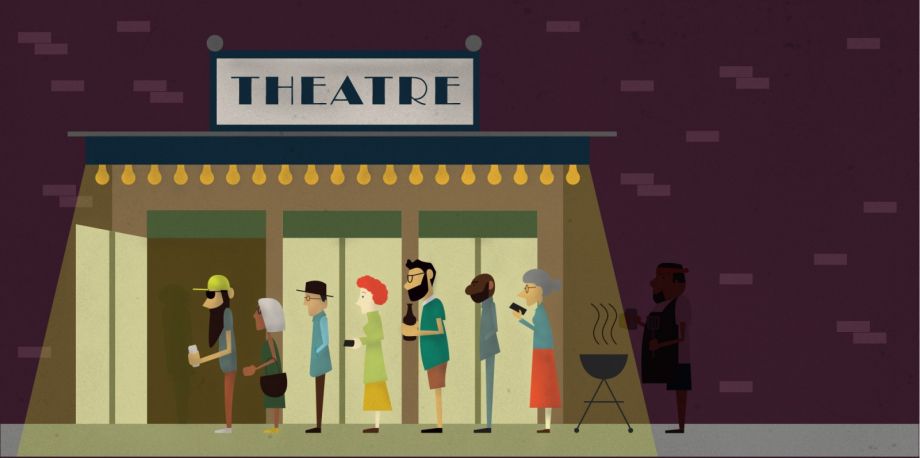Are You A Vanguard? Applications Now Open
This is your first of three free stories this month. Become a free or sustaining member to read unlimited articles, webinars and ebooks.
Become A MemberThere was a sell-out crowd at the San Diego Opera’s April 13th matinee of “Don Quixote,” its season closer. Normally a sign of a healthy arts organization, this sell-out was actually a sign of just how dire things had become. Almost like a crowd at a funeral procession, ticket-buyers filled up the 2,877-seat San Diego Civic Theatre to pay their last respects to what was, at that time, a historic institution on the verge of dissolution.
A month earlier, the Opera’s board had voted nearly unanimously to close the company. Ticket sales were down, the organization struggled to attract new audiences, and support from sources both public and private had gradually diminished to a point where it seemed impossible for the 49-season opera to eke another one out. Internal politics, conflicting visions and questionable compensation for some of its top executives played into the dramatic last-minute vote to close the opera company. It was just the kind of drama that gets opera lovers to stand up and take notice and within days, employees had mounted a crowdfunding campaign. A petition to save the opera made the rounds online.
At the next board meeting, nearly half the board resigned and the opera gained a few weeks’ reprieve. The executive director was pushed out. In the meantime, the campaign, Save San Diego Opera, had set a fundraising goal of $2 million. More than 20,000 people signed the petition and donations ranging from $10 to $10,000 began rolling in. By mid-May the campaign passed its goal, bringing in a total of $2.23 million. Additional fundraising brought in another $1.7 million and a reformulated board voted unanimously to rescind the closure vote. After two months of wavering precariously on the edge of a cliff, the San Diego Opera managed to hang on, if just barely.
“Fortunately when the outcry came, people learned that it does take a village to keep this company alive,” says Keith Fisher, chief operating officer of the San Diego Opera. The near-death experience and the grassroots campaign had attracted a new breed of donor for the stodgy institution. An impressive 48 percent of campaign donors were first-time contributors, and only about $100,000 came from the traditional corporate sources that often fund major arts organizations. In many ways, the success of the campaign was more surprising than the death of the opera would have been. It was enough to give Fisher and his colleagues pause.
“We can no longer depend on those few numbers of wealthy individuals to take care of us in the future,” Fisher says.
Teetering on the edge of viability is something of a recurring trend among non-profit arts organizations in the U.S., be they opera companies, ballets, orchestras, art museums or smaller, community-focused programs. These cultural anchors have always struggled to make ends meet, and that challenge has become especially acute in the aftermath of the economic recession. Since 2008, symphonies in Albuquerque, Honolulu and Syracuse have folded, the Philadelphia Orchestra filed for bankruptcy protection, and the New York City Opera went out of business. That’s just a handful of some of the larger organizations among tens of thousands of arts and cultural organizations nationwide struggling to survive.
Yet amid the turbulence, there are a number of arts organizations that have found new ways to stay afloat. They confronted a new economic landscape and, like the San Diego Opera, they adopted new strategies and even new identities. Much like big media has learned from the fast-paced movement of the blogosphere, old cultural lions are taking hints from smaller organizations that long ago learned the value of engaging with their communities.
“We’re calling ourselves SDO 2.0 right now because we kind of feel like we’re a startup,” Fisher says. “We have the seed funding to fund that startup, and we’re just trying to figure out how to make this all happen.”
It’s no accident that the San Diego Opera has claimed the language of Silicon Valley. It will take more than Fisher’s metaphorical village to keep the opera alive.

Though this ecosystem functions differently everywhere, new strategies for sustainability hint of forever altered rules and assumptions for arts institutions in the U.S. And strangely enough, it is the 400-year-old art form of opera at the vanguard of the new arts economy.
Opera wasn’t always the tame dress-up-sit-down affair its reputation would suggest. In his book Opera in America: A Cultural History, John Dizikes writes that the early days of formal theatergoing were far more raucous than today, with bars and saloons built within the theaters and drunken brawls a common occurrence. Things got so wild that theater managers often had to employ their own police forces. In 1879, when San Francisco’s Tivoli Beer Garden reopened as the Tivoli Opera House, it remained true to its boozy roots, encouraging operagoers to bring wine and beer with them to their seats. Randy Cohen, vice president of research and policy at the advocacy group Americans for the Arts, says that in the 1800s operagoers would regularly walk in and out of the performances, ducking in to catch a favorite aria and leaving again to have a drink or gamble in the lobby.
Don’t expect a craps table at the Met any time soon, but those early examples of opera in the U.S. are increasingly relevant to what audiences want today, says Jennifer Novak, a researcher at the University of Chicago’s Cultural Policy Center who focuses on measuring and understanding cultural participation.
“There’s a lot of experimentation in terms of how programs are presented — can people be more social during a program as opposed to sitting forward and looking at a stage in their seats,” says Novak.
The experimentation takes varied forms. One update to the audience experience breaks the cardinal rule of modern theatergoing: Patrons in certain seats, often the back row, are encouraged to keep their mobile phones on and even active during performances. These “Tweet seats” have been offered by operas across the country, including Opera Philadelphia, Opera Omaha and the Lyric Opera of Kansas City. The interactive approach, the cultural institutions say, draws in the smartphone-obsessed who enjoy narrating their every moment and offers a way for the organizations to create a lively social media presence at no cost.
Another strategy is rethinking the stories being told. In Chicago, the Lyric Opera realized it wasn’t reaching huge chunks of the city’s population and decided to take a gamble with a show aimed at the city’s large Latin American population, not traditionally a demographic associated with the opera house. The Lyric’s 2015 season includes the world premiere production of “El Pasado Nunca Se Termina,” a Spanish-language “mariachi” opera set on the eve of the Mexican Revolution.
Then there is the option of radically rethinking the presentation itself, like one company did last fall in Los Angeles. In the waiting area of L.A.’s Union Station, the L.A.-based opera group The Industry and the L.A. Dance Project performed “Invisible Cities,” broadcast via wireless headphones to the audience. The opera, based on an Italo Calvino novel, used the train station’s various rooms as its stage, and the audience was encouraged to walk around the station as the music played and the dancers interacted with the space. “Finally, someone who’s made opera accessible and fun,” wrote a reviewer for the blog Pure Wow.

The L.A.-based opera group The Industry and the L.A. Dance Project performed “Invisible Cities” in the waiting area of L.A.’s Union Station
“Ticket sales were down and revenues were down, so you figure OK, I guess Washingtonians just aren’t interested in opera anymore,” says Cohen, of Americans for the Arts. But, he says, the Kennedy Center does a live simulcast of an opera on the big screen behind the bleachers of Nationals Park and 20,000 people show up. “Young people, families. So the problem isn’t necessarily opera, but maybe some of the delivery mechanisms need to be reconsidered.”
“Some days wouldn’t you rather have a beer and a chili dog at the opera instead of having to get all uptight and go to the Kennedy Center?”
These contemporary tweaks to a baroque art form range from gimmicky to radical, but at their core they’re all about luring the new audiences needed to make opera relevant in cities that simply don’t look or function like they did 50 or even 25 years ago. Sometimes the best way to attract people is to meet them where they want to be, both physically and thematically.
Even the New York City Opera, which filed for bankruptcy last year after several failed fundraising rounds, including a $1 million Kickstarter campaign, saw its life extended thanks to experimentation. In its final years before the 2013 shuttering, the opera — dubbed “The People’s Opera” by former Mayor Fiorello La Guardia — collaborated with Brooklyn Academy of Music on several projects, including an opera about the life and death of pill-popping Playboy model Anna Nicole Smith.
Still, the opera was not naive about its continuing traditional dependence on deep-pocketed donors, even as it pursued broader audiences and new partnerships.
“A broad-based audience has been central to the artistic mission of the company since it was founded,” George Steel, the troupe’s general manager and artistic director, told Mashable in 2013. “I think if we can demonstrate that we have broad-based support, it would be attractive to the kind of donors who could save the company.”
It’s a lesson quietly ricocheting off the acoustic walls of high culture across America.
Moving beyond opera, the self-identified laboratory for experimentation within the high arts is the New World Symphony in Miami Beach, Florida. The symphony is something of a farm team for young musicians, mostly in their 20s, who complete three-year fellowships and often move on to larger professional orchestras around the country. But this is no amateur operation. Established in 1987 under the artistic direction of conductor and composer Michael Tilson Thomas, the orchestra has performed in dozens of countries and released seven studio recordings. It performs regularly at the New World Center, its Frank Gehry-designed campus in Miami Beach, where it pursues a key part of its mission: sharing classical music with as many people as possible.
It started simply, at New World Symphony’s original performance space, a converted old movie theater on the Lincoln Road pedestrian mall. With all the foot traffic outside, it was relatively easy to get the word out about the orchestra. But because of the wide variety of activities in the area, it wasn’t so easy to convert foot traffic into an audience for a two-hour orchestral performance. So New World Symphony devised the lower-barrier option of half-hour-long performances, priced at just $2.50. These mini-concerts became a hit.
Since then, New World Symphony has experimented with a number of different presentation styles. Performance times have been pushed later in the night to better accommodate busy lives on the typical workday. Commissioned video art is projected on screens during performances to accompany the music. Twice a year an event called Pulse transforms the performance space into more of a nightclub, where half the seats are removed, drinks are served and deejays perform before and after the orchestra. The program runs until 1:30 a.m., and ends with a dance party in the main room and a more intimate, quiet chamber music performance in a side space.
After events like these, New World Symphony conducts extensive surveys of the audience, on paper, online and in focus groups. Surveys show that about 40 percent of audience members at Pulse events haven’t attended other symphony events. For its mini-concerts, almost half the audience is attending for the first time. About one-third of first-timers come back for a second performance, and 19 percent come back even more often. This information helps the symphony to understand what works and who the audience is.
One of the more innovative experiments takes place outside. One wall of the building also serves as a giant projection screen, where about 14 performances per season are broadcast live to an outdoor audience in a 2.5-acre plaza. These “wallcasts” have drawn thousands. And now New World Symphony is hosting theme nights for groups like cyclists and yoga enthusiasts. A recent mini-concert was followed by an outdoor yoga class taught by local instructors. More than 500 people showed up.

The New World Symphony in Miami Beach hosts performances and screenings outside.
“The architecture helps. But if you really identify your target audience and you’re clever and inviting with the creation of the experience, you can do it anywhere,” says Herring.
He says New World Symphony’s success in drawing in new audiences has helped to draw in more financial support. “In the case of searching for new audiences, one of the things that has been clear, and it’s clear in the professional worlds as well as here at the New World Symphony, funders are eager for orchestras to reach out,” he says. “Funders are eager for these new forms of engagement.”
“Some days wouldn’t you rather have a beer and a chili dog at the opera instead of having to get all uptight and go to the Kennedy Center?”
“There is way more experimentation than anyone knows about,” Herring says. “People are trying new things, creating new experiences with target audiences. I think that 10 years ago people sort of scratched their heads and said well is that really possible? But in our experience it’s happening.”
But as the New York City Opera learned last year, Kickstarter-happy millennials alone can’t — and won’t — keep arts institutions alive.
To understand the quandary these organizations face, it helps to look to Europe where government plays a much larger role in supporting the arts.
The city of Berlin, population 3.4 million, has an annual arts budget of roughly €360 million, or about $487 million U.S. The National Endowment for the Arts, the federal arts agency of the United States, population 318 million, has a fiscal year 2014 budget of a little more than $146 million. Exactly how the U.S. federal government could dedicate less than one-third the amount of money the city of Berlin does to the arts is a complex and nuanced story, but essentially it boils down to differing values. The government in Germany, and indeed those in many countries in Western Europe, simply value the arts more than lawmakers on Capitol Hill. In some European countries, anywhere between 40 percent and 85 percent of the budgets of arts organizations comes from the government, Cohen says. “There’s just a longer history of that value and appreciation.”
Arts organizations in the U.S. have never enjoyed European levels of government support, which has resulted in the creation of a hybrid funding model of public and private sources that might best be labeled the American way. It’s a model that has arts organizations applying, competing and practically begging for money from federal, state, and local arts agencies, private foundations, individual donors and, perhaps most especially, the audiences that they are sometimes desperately trying to hold onto. From operas and orchestras to mime troupes and one-room galleries, arts organizations in the U.S. are almost always hat in hand, seeking funding from sources that rarely offer any guarantee of continued support.
It doesn’t hurt to have a few billionaires around. Since the late 1800s when steel magnate Andrew Carnegie argued that the wealthy should shun patrimony and instead spread their riches, philanthropists and foundations have served as large-scale supporters of the arts in the U.S. Many of these organizations tend to focus their support locally, making grants and donations to cultural institutions in their own backyards. That’s great for the cities that house major foundations, says Barry Hessenius, former director of the California Arts Council and author of a widely read arts administrator insider blog.
“Minneapolis, St. Paul, Washington, D.C., New York, Miami are some of the cities that are fortunate enough to have major foundational players that are arts supportive, but that’s not across the board,” Hessenius says. “That’s not a replicable model anywhere you want it to be.”
The John S. and James L. Knight Foundation has been one of those foundational players, operating in the 26 communities the Knight brothers owned newspapers during the 20th century. The foundation has a special focus on supporting arts organizations — both the large anchor institutions like operas and art museums as well as smaller groups and individual artists. “We’re really interested in the grassroots in our communities because that’s where we think their greatest opportunity for growth is,” says Dennis Scholl, vice president of arts for the Knight Foundation. He argues that arts and culture is a critical part of creating attractive communities. And while he acknowledges that not every community has the support of a deep-pocketed foundation, he argues that the benefits of having arts in a community justifies more support for arts groups at every level.
There are roughly 95,000 arts and culture non-profits in the U.S., according to Americans for the Arts. In general, these organizations get about 60 percent of their revenue from earned income — ticket sales, advertising, gift shops and so on. About 30 percent comes from foundations, corporations and individual contributions. The last 10 percent comes from public support, usually from the city, county or state. “Arts institutions in all these cities, I don’t think any of them would ever say they have enough. It’s always hard work, it’s a variety of sources,” says Michael Killoren, director for local arts agencies at the NEA. He says that identifying and embracing those sources at the local level is key to sustainability. That means partnering with local foundations, where they exist, working with political leaders to consider taxing mechanisms to fund the arts, and building a robust audience. “Their most significant source of support is going to come from individuals. That’s really the powerful piece in all this.”

“I don’t think that the non-profit arts can survive at the level it has in the past unless there is substantive government support,” says Hessenius.
Getting there will be tough. Today, the most common means of generating public support for the arts is dedicated taxes. Many cities, including San Francisco and Los Angeles, have what is known as a transient occupancy tax, or a hotel/motel tax. A portion of the taxes levied largely on outsiders is pooled to support the arts through grants. In San Francisco, for example, that tax generates about $30 million a year.
Voter-approved increases in sales or property taxes are also fairly common across the country. In 2012, voters in a three-county region around Detroit approved a millage on their property taxes to support the Detroit Institute of Arts, a move that’s expected to raise about $23 million a year. Metropolitan Denver’s Scientific and Cultural Facilities District funds arts organization, museums and the performing arts, and distributes about $40 million a year. It’s been approved three separate times by voters in the seven-county region. And in St. Louis, a zoo and museum district is funded by transit occupancy taxes and property taxes in St. Louis City and County. About $70 million is raised every year, and various museums and institutions are open free to visitors. There is no sunset on these taxes.
Other places have instituted what are commonly called “sin taxes” — an extra few fractions of a percentage added onto the tax for items like cigarettes. Cuyahoga County, Ohio, generates about $15 million a year through a cigarette tax approved by voters in 2006.
But taxes aren’t always politically viable, especially not in cities where fiscal conservatism reigns.
The city of Charlotte began considering its local arts and culture scene an economic development driver back in the 1970s, when the then-sleepy but growing city was first strategizing about how to compete with larger cities for businesses and residents.
Old cultural lions are taking hints from smaller organizations that long ago learned the value of engaging with their communities.
“There’s been a phenomenal transformation over the past 50 years, and particularly in arts and culture,” says Killoren, of the NEA.
This success in developing cultural institutions is part organization and intention — the city has released four cultural action plans since 1976, and a fifth will be released this fall. But the real driving force is the city’s focus on public-private partnerships to not only build but also support these institutions.
Before the recession, ASC raised about $19 million a year, mostly through voluntary payroll deductions and an annual fund drive that pulled in donations from more than 40,000 people. ASC worked with the city to use these funds as leverage for public investments. In a true public-private partnership, the city invested in building cultural facilities while ASC created endowments to fund operations over the long term. “We opened three new museums and a new theater and a completely renovated museum in 2009 and ’10,” says Robert Bush, ASC’s president. The city spent $159 million on new facilities, and ASC raised $83 million to endow their operations. Bush says the partnership epitomizes Charlotte’s identity.
“We have made our mark by being this place that is built on this public-private partnership theme and it continues to be something that people believe in. The expectation is there that that is the way we do business,” Bush says. “It is part of our calling card to the world, where the government and the private sector work together and get things done.”
But since the recession, both workplace giving and corporate donations have fallen. Bush admits it’s time to rethink the way ASC and the city as a whole generates support for cultural institutions. Though arts organizations in Charlotte do their own fundraising in addition to what ASC does, some organizations have over the years become disproportionately reliant on ASC’s fund drives, he says. The forthcoming cultural action plan recommends that more fundraising shift away from ASC and back to the organizations themselves.
The goal, Bush says, is to encourage more engagement with audiences. He has learned the same thing as peers in San Diego, New York, D.C., Miami and elsewhere: Arts institutions must break out of their ivory towers if they want to survive. “It’s about getting people involved, in going and doing and participating,” he says. “They’re then learning about what it costs to runs these institutions.” If they know the costs, the thinking is, they’ll be more willing to provide the funding.
But after more than 50 years of ASC leading fundraising efforts, there’s a risk in changing course. “The trick there is how do you do this and not destabilize everything,” says Bush. “I’m either going to be a hero or get run out of town.”
This change of course is an acknowledgment that the age of the top-down, institution-based support model for arts organizations may be just as obsolete as the patron-based model. One way of looking at it is as a necessary democratization of high culture. Out of necessity, the city’s elite institutions will have to begin engaging with regular folks if they want to survive — and that is not a bad thing.
Disclosure: The Knight Foundation, mentioned in this article, is a supporter of Next City.
Our features are made possible with generous support from The Ford Foundation.

Nate Berg is a writer and journalist covering cities, architecture and urban planning. Nate’s work has been published in a wide variety of publications, including the New York Times, NPR, Wired, Metropolis, Fast Company, Dwell, Architect, the Christian Science Monitor, LA Weekly and many others. He is a former staff writer at The Atlantic Cities and was previously an assistant editor at Planetizen.

Tim Pacific is an award-winning graphic design student entering his senior year at Rutgers University in Camden. In addition to his schoolwork, Tim is an active freelance illustrator. His work can be seen in AIGA Philadelphia’s SPACE, which features a recently completed series of hand-lettered postcards. Among his design philosophies, Tim believes strongly that concept comes first and you should absolutely judge a book by its cover design.

20th Anniversary Solutions of the Year magazine